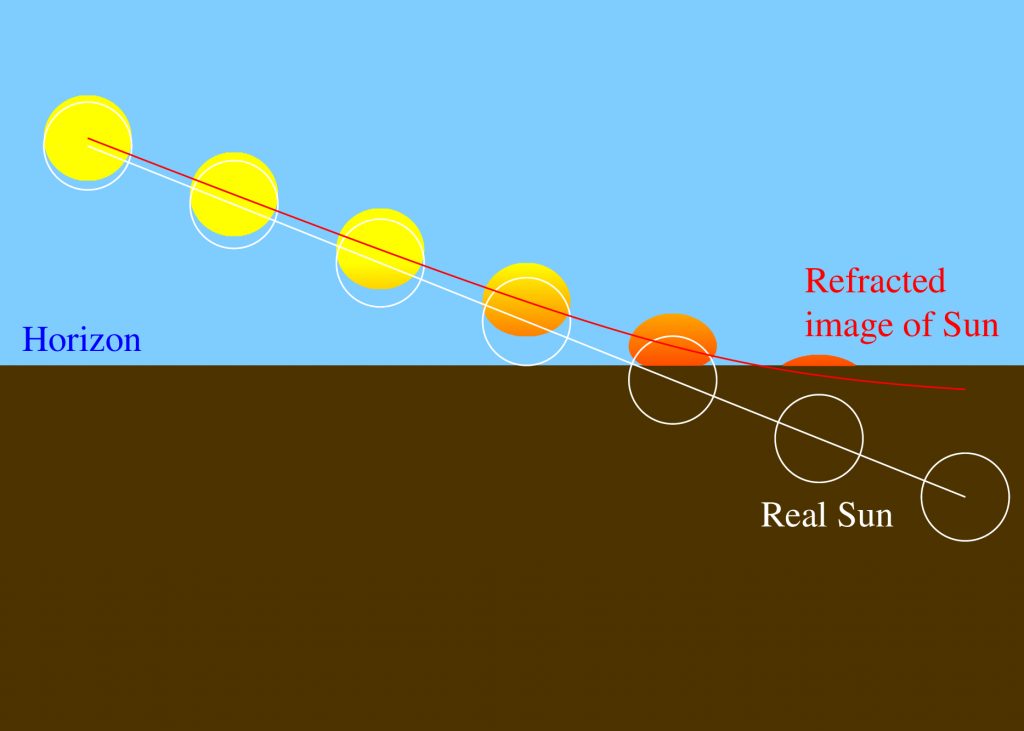The equinox is defined as the moment at which the plane of the Earth equator passes through the centre of the Sun. In other words, it is the moment at which the center of the visible Sun is directly above the equator. The northern and southern hemispheres of the Earth are then illuminated in the same way. This moment occurs two times each year: around 20 March (spring equinox) and 23 September (autumnal equinox).
However, during the equinox, the day and the night are not of equal length. Actually, the length of the day is slightly longer than the length of the night.
Why is this the case? This is mainly for two reasons:
- The Sun is not perceived from the Earth as a point but as a luminous disc. Sunrise (sunset) is defined as the time when the upper edge of the solar disc, not the centre of the Sun, appears (disappears) on the horizon. Therefore, since the upper edge of the Sun appears before its centre, and disappears after its centre, we gain a few minutes of sunlight during the equinox.
- Sunlight is deflected by the atmosphere. This is due to atmospheric refraction, a phenomena that “flattens” the Sun near the horizon. As a result, the upper edge of the Sun may be visible when it is actually below the horizon.

These two effects combined therefore explain why the length of the day is longer than 12 hours on the day of the equinox. The day during which the length of the day is closest to 12 hours is before the spring equinox and after the autumnal equinox. In Belgium, this day is the 17th or 18th of March and the 25th or 26th of September.
